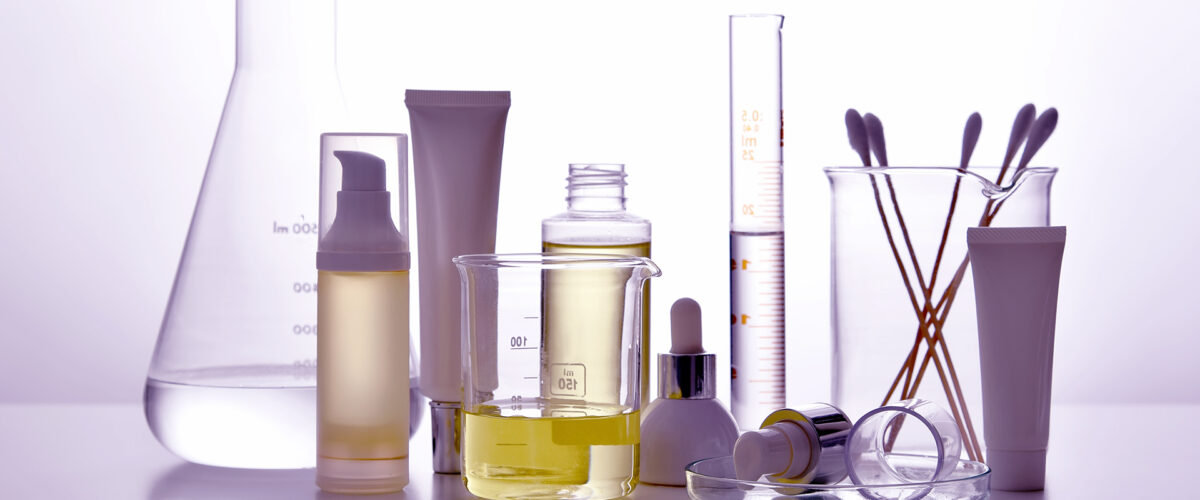Artikel | 11 november 2022
Classification of products in the borderland between cosmetic and medicinal products

Where the line is drawn between a cosmetic and a medicinal product may seem intuitive. However, the preliminary ruling published by the Court of Justice of the European Union on 18 October 2022 in Case No. C-616/20 shows that it is not always entirely clear where the distinction should be made.
Classification of products as either cosmetic or medicinal products
According to Regulation (EC) No 1223/2009 on cosmetic products (the “Cosmetics Regulation”), a “cosmetic product” refers to substances or mixtures intended to be applied to the external parts of the human body, or to teeth and oral mucous membranes, exclusively or mainly to clean or perfume them, alter their appearance, protect them, maintain them in good condition, or correct body odours.
According to Directive 2001/83/EC on medicinal products for human use (the “Medicinal Products Directive”), a “medicinal product” refers to any substance or combination of substances supplied for the treatment or prevention of disease in humans or intended to be administered to humans for the purpose of diagnosis or to restore, correct or modify physiological functions.
The definition means that a product can be classified as a medicinal product by the claims under which it is being marketed. If a product is sold under the promise that it can treat a specific disease, the product is normally classified as a medicinal product by presentation.
A product can also be classified as a medicinal product by its function. This means that, despite not being marketed under claims that it can be used for the treatment of disease, a product has such an effect on the body that it can be considered a medicinal product.
The current preliminary ruling dealt with the question of which properties a product must possess for it to be considered a medicinal product by function and thus subject to the far-reaching regulatory requirements imposed for a medicinal product to be made available on the market.
The case before the German Administrative Court
The product under review by the German authorities was an eyelash serum which, according to the company’s own data, increased the density and growth of eyelashes. The product was applied with a brush and was being marketed as a cosmetic product. The authorities considered that the product should be classified as a medicinal product by function, due to the fact that it contained, among other things, an active substance belonging to the group of prostaglandin analogues. A structurally similar substance to the one found in the cosmetic product was also used in the form of eye drops for the treatment of, among other things, glaucoma.
The German supervisory authority found in 2014 that due to the pharmacological action of its active substance, the eyelash serum should be classified as a medicinal product by function. It should be noted that the authority’s assessment of the pharmacological effect of the substance was not based on data relating to the substance in question, but on a structurally similar substance authorised for and used in the treatment of glaucoma.
The German Administrative Court referred three questions to the CJEU for a preliminary ruling.
- The first question concerned whether, in the absence of data on the substance in question, the competent national authorities could determine the pharmacological properties of the product based on scientific evidence of a structural analogue of the substance contained in the product.
- The second question concerned whether a product placed on the market as a cosmetic, but which significantly modifies physiological functions by producing a pharmacological effect, should be regarded solely as a medicinal product by function if the product has a positive concrete, health-promoting effect and positive effects on appearance, which in turn would lead to intermediate beneficial health effects in the form of increased self-esteem or improved well-being.
- The third question concerned whether a product could be regarded as a medicinal product by function when the positive effects of the product were limited to an improvement in appearance, but where the product did not have exclusively harmful effects on health and thus could not be compared to narcotics.
The Court’s assessment
The first question was answered by the Court relatively clearly and concisely: in the absence of a scientific study on a substance present in a product placed on the market as a cosmetic, a competent national authority may, when classifying products, draw conclusions as to the pharmacological properties of the substance based on scientific evidence regarding a structural analogue of the substance. However, such an assessment requires the products to be sufficiently similar for the authority to assume, in an ”objective and scientifically based assessment”, that a substance present in the product in question exhibits, at certain concentrations, the same properties as an existing substance for which studies are available.
The Court’s interpretation should be seen in light of the overriding interest in protecting public health. It should simply not be possible to market a product as a cosmetic if the product has such a pharmacological effect on the body that it should really be supplied as a medicinal product. In such a case, relying on the fact that the Cosmetics Regulation does not require pharmaceutical examinations, preclinical studies or clinical trials, thereby avoiding the requirements for such documentation before the product is made available on the market, cannot be accepted. It should therefore not be possible to circumvent pharmaceutical legislation by marketing a product as a cosmetic.
On the other hand, the Court’s ruling causes some headaches for cosmetics companies. One might ask, for example, whether it is incumbent on cosmetics companies to collect data, and if so, what data, to refute the claims of pharmacological action by authorities, based on evidence of a structural analogue. Going forward, the risk is that cosmetics companies will need to invest significant amounts of money to avoid authorities classifying their products as medicinal products by function, based on such reasoning.
The Court chose to answer the remaining questions jointly. It is established by past practice that a product cannot be a medicinal product by function if it merely modifies the physiological functions of the body without giving rise to immediate or intermediate positive effects on health, but while, on the other hand, giving rise to harmful effects on the body (see joint Cases C-358/13 and C-181/14). What the German Administrative Court wanted to know was whether a product that modifies physiological functions, but which has no positive effects on health, can be classified as a medicinal product when the product only improves appearance, which in turn leads to intermediate health-promoting effects in the form of increased self-esteem or improved well-being, without the product having any harmful properties.
By now, attentive readers are probably wondering how it is possible to objectively measure factors such as ”improvement in appearance”, ”increased self-esteem” or ”improved well-being”. That is a legitimate consideration, on which the Court, unfortunately, does not provide any real clarity. However, the Court found that the fact that the product can improve appearance and thus lead to an increase in self-esteem or improved well-being is not in itself sufficient for positive effects on health to be considered “scientifically established”.
The Court considers that a product can be classified as a medicinal product by function if the product has positive effects on health, where these consist of, for example, increased self-esteem or improved well-being, provided that the product makes it possible to treat a recognised disease. However, the Court is not consistent in its description of how to assess whether a product makes it possible to treat a disease. In one instance, the Court refers to the fact that the product may be prescribed for therapeutic purposes, while in other places it is stated that the product should be regarded as suitable for use in the treatment of a recognised pathological condition and that this should be established on the basis of scientific studies.
It is therefore unclear whether the requirement is that the product can actually be prescribed by, for example, a doctor for treatment or whether it is sufficient for scientific studies to show that the product is suitable or has properties that make it possible (as the Court also mentions) to treat pathological conditions.
The case-by-case assessment is to be made by the national courts and it remains to be seen how they choose to interpret the judgement and make use of the space left to them by the preliminary ruling.
There are still some ambiguities for cosmetics companies
The Advocate General’s Opinion for a preliminary ruling, published on 7 April 2022, began with the sentence ”Beauty is in the eye of the beholder. In this case, literally”. The Advocate General pointed out the fact that the question of where the distinction should be drawn between medicinal and consumer products, including cosmetics, has been the subject of many and different interpretations over the years and has been highly dependent on the circumstances of the individual case. It is clear from the Court’s preliminary ruling that it should not be possible to circumvent pharmaceutical legislation by marketing a product as a cosmetic if it is actually a medicine for a recognised pathological condition. This is fundamentally a sound approach, which is in line with the interest in protecting public health. On the other hand, it is of the utmost importance for predictability and the free market that the legal provisions on medicinal products are not applied as a quick way of removing products from the market that are difficult to classify. It is essential that the border between medicinal products and other product categories, such as cosmetics, is respected and that products that are not actually used or are not to be used for the treatment of disease are allowed to continue to be cosmetics.
Kontakt:


